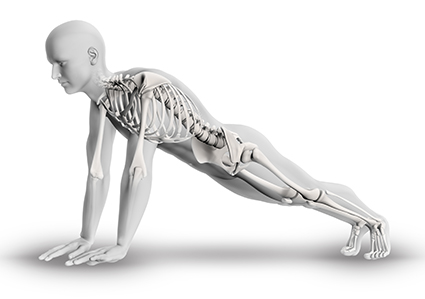Bone health: Tips for maintaining bone health

Protecting bone health is easier than you think. Understand how diet, physical activity and other lifestyle factors can affect bone mass.
Bones play many roles in the body - they provide structure, protect the organs, strengthen muscles and accumulate calcium. While it is important to build strong, healthy bones in childhood and adolescence, you can also take steps to protect bone health in adulthood.
Why is bone health important?
Your bones are constantly changing - new bones are formed and old bones break. When you are young, your body builds new bones faster than it breaks old ones and your bone mass increases. Most people reach the peak of their bone mass for about 30 years, after which remodeling of bones continues, but you lose a little more bone mass than you get.
You are likely to have osteoporosis, a condition where your bones become weak and fragile, depending on how much bone you reach by the age of 30 and how quickly you lose it after that. The higher your maximum bone mass, the more bones you have "on the bench" and the less likely you are to develop osteoporosis as you age.
What affects the health of your bones?
A number of factors can affect bone health. For example, .
The amount of calcium in your diet. A diet with low calcium content contributes to lower bone density, premature bone loss and increased risk of fractures.
Physical activity. Physically inactive people have a higher risk of osteoporosis than their more active peers.
Tobacco and alcohol consumption. Studies show that tobacco use contributes to bone weakness. Similarly, regular consumption of more than one alcoholic beverage per day for women or two alcoholic beverages per day for men can increase the risk of osteoporosis.
Sex. A woman has a higher risk of osteoporosis because she has less bone tissue than a man.
Size. You are at higher risk if you are very skinny (with a body mass index of 19 or less) or have a small build, because with age you may have less bone mass available.
Age. As you get older, your bones get thinner and weaker.
Race and family history. You have the highest risk of osteoporosis if you're white or Asian. If your parents or siblings have osteoporosis, you are also at increased risk - especially if your family also has a family history of fractures.
Hormone levels. Too much thyroid hormone can lead to bone loss. In women, bone loss dramatically increases during menopause due to lower estrogen levels. Prolonged absence of menstruation (amenorrhea) before menopause also increases the risk of osteoporosis. In men, low testosterone levels can lead to loss of bone mass.
Nutritional disorders and other diseases. People with anorexia or bulimia are at risk of bone loss. In addition, stomach surgery (gastrectomy), weight loss surgery, and conditions such as Crohn's disease, celiac disease, and Cushing's disease can affect the body's ability to absorb calcium.
Some medicines. Long-term use of corticosteroid drugs such as prednisone, cortisone, prednisolone and dexamethasone is harmful to bone. Other drugs that may increase the risk of osteoporosis include aromatase inhibitors for breast cancer, selective serotonin re-uptake inhibitors, methotrexate, some antiepileptic drugs such as phenytoin (dilantin) and phenobarbital, and proton pump inhibitors.
What can I do to keep my bones healthy?
You can take a few simple steps to prevent or slow down bone loss. For example, .
Put a lot of calcium in your diet. For adults aged 19 to 50 years and men aged 51 to 70 years, the recommended diet (RDA) is 1000 milligrams (mg) of calcium per day. For women 50 years of age or older and men 70 years of age or older, the recommended diet is increased to 1,200 mg per day.
Good sources of calcium are dairy products, almonds, broccoli, cabbage, canned salmon with bones, sardines and soy products such as tofu. If you have trouble getting enough calcium from your diet, ask your doctor about nutritional supplements.
Careful with vitamin D. Your body needs vitamin D to soak up calcium. For adults between the ages of 19 and 70, your Vitamin D RDA is 600 international units (IU) per day. For adults 71 years of age and above, the recommendation increases to 800 IU per day.
Oily fish such as salmon, trout, whitefish and tuna are good sources of vitamin D. In addition, mushrooms, eggs and fortified foods such as milk and cereals are good sources of vitamin D. Sunlight also contributes to vitamin D production by the body itself. If you are worried about getting enough vitamin D, ask your doctor about nutritional supplements.
Include physical activity in your daily routine. Intensive exercise such as walking, jogging and climbing stairs can help you build strong bones and slow down bone loss.
Avoid drug addiction. Don't smoke. If you are a woman, avoid drinking more than one alcoholic beverage a day. If you are a man, avoid drinking more than two alcoholic beverages a day.